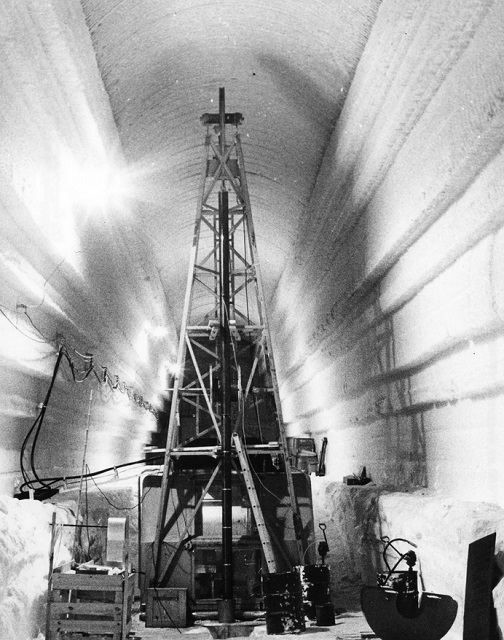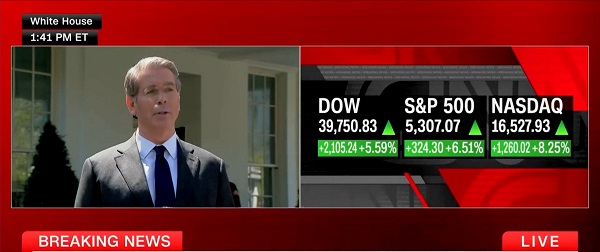Economy
Abandoned Greenland ice base calls co2 concerns into question

Wired.com had another story with a climate change hook on July 20 called, “An Abandoned Arctic Military Base Just Spilled a Scientific Secret.” It began “During the Cold War, the US built a network of tunnels in the Greenland ice sheet. Sixty years later, the base has provided a critical clue about the climate crisis.”
From 1959 to 1966, Project Iceworm in Greenland was meant to establish military bases in caverns carved out of glacial ice, with Camp Century being the trial run. The plan was to locate as many as 600 intercontinental ballistic missiles in under-ice caverns, invisible to the Soviets, and within striking range of the USSR.
However, the project never did work out and it was terminated in 1966.
The climate angle comes out of what was discovered in remarkable ice core the military drilled through the glacier.
The Wired article said that researchers drilled a 4,550-foot-deep core through the ice sheet, and when they hit earth, they drilled another 12 feet, bringing up a plug of frozen sand, dirty ice, cobbles, and mud.
It continued, “Nobody cared much about the sediment, though, until 2018, when it was rediscovered in … a University of Copenhagen freezer.” Now, an international team of researchers has analyzed that sediment, and made a major scientific discovery.
“In that frozen sediment are leaf fossils and little bits of bugs and twigs and mosses that tell us in the past there was a tundra ecosystem living where today there’s almost a mile of ice,” says University of Vermont geoscientist Paul Bierman, coauthor of a new paper describing the finding in the journal Science. “The ice sheet is fragile. It can disappear, and it has disappeared. Now we have a date for that.”
Wired wrote, “Previously, scientists reckoned that Greenland iced over some 2.5 million years ago, and has been that way since. In 2021, Bierman and his colleagues determined that it was actually ice-free sometime in the past million years. Now, they’ve dated the tundra ecosystem captured in the Camp Century core to a mere 416,000 years ago—so northwestern Greenland couldn’t have been locked in ice then.”
And here’s where the mental gymnastics take place: Scientists also know that at that time, global temperatures were similar or slightly warmer than what they are today. However, back then, atmospheric concentrations of planet-warming carbon dioxide were about 280 parts per million, compared to today’s 422 parts per million—a number that continues to skyrocket.”
The article continued, “Because humans have so dramatically and rapidly warmed the climate, we’re exceeding the conditions that had previously led to the wide-scale melting of Greenland’s ice sheet and gave rise to the tundra ecosystem. “It’s a forewarning,” says Utah State University geoscientist Tammy Rittenour, a coauthor of the new paper. “This can happen under much lower CO2 conditions than our current state.”
Whoa, there, Nelly! You’re telling me that carbon dioxide levels were a full third less than they are today, and yet the northernmost portions of Greenland (the most likely to freeze) was tundra? Greenland did not have the better part of a mile of ice covering it when CO2 was well below the supposedly crucial threshold of 350 parts per million?
Indeed, the article goes on to say, “That melting [of all the Greenland ice] could be incredibly perilous. The new study finds that the Greenland ice melt 400,000 years ago caused at least 5 feet of sea level rise, but perhaps as much as 20 feet. “These findings raise additional concern that we could be coming perilously close to the threshold for collapse of the Greenland ice sheet and massive additional sea level rise of a meter or more,” says University of Pennsylvania climate scientist Michael Mann, who wasn’t involved in the research. Today, less than a foot of global sea level rise is already causing serious flooding and storm surge problems for coastal cities—and that’s without the potential for an additional 20 feet.”
Again, look at the claim: carbon dioxide levels were much lower, sea levels were much higher, and the Greenland ice sheet was much smaller.
This new evidence makes reasonable people wonder if there truly is a link between carbon dioxide levels, global warming, and disappearance of ice sheets. How could so much ice be gone, melted into the ocean, with such a low CO2 level?
Surely something here doesn’t jive. And yet the world is in a tizzy over rising carbon dioxide levels.
Maybe someone should go back to Greenland, and drill a few more core samples to test this theory before we destroy our economy and our lives.
Perhaps the science of climate change isn’t settled after all.
Brian Zinchuk is editor and owner of Pipeline Online, and occasional contributor to the Frontier Centre for Public Policy. He can be reached at [email protected]. First published here.
Bjorn Lomborg
The stupidity of Net Zero | Bjorn Lomborg on how climate alarmism leads to economic crisis

From spiked on YouTube
Note: This interview is focused on Europe and the UK. It very much applies to Canada. The 2025 Federal Election which will see Canadians choose between a more common sense approach, and spending the next 4 years continuing down the path of pursuing “The Stupidity of Net Zero”.
European industry is in freefall, and Net Zero is to blame.
Here, climate economist Bjorn Lomborg – author of Best Things First and False Alarm – explains how panic over climate change is doing far more damage than climate change itself. Swapping cheap and dependable fossil fuels for unreliable and expensive renewables costs our economies trillions, but for little environmental gain, Lomborg says.
Plus, he tackles the myth of the ‘climate apocalypse’ and explains why there are more polar bears than ever.
Support spiked: https://www.spiked-online.com/support/
Sign up to spiked’s newsletters: https://www.spiked-online.com/newslet…
Business
Scott Bessent Says Trump’s Goal Was Always To Get Trading Partners To Table After Major Pause Announcement


From the Daily Caller News Foundation
By
Secretary of the Treasury Scott Bessent told reporters Wednesday that President Donald Trump’s goal was to have major trading partners agree to negotiate after Trump announced a 90-day pause on reciprocal tariffs for many countries after dozens reached out to the administration.
Trump announced the pause via a Wednesday post on Truth Social that also announced substantial increases in tariffs on Chinese exports to the United States, saying 75 countries had asked to talk. Bessent said during a press event held alongside White House press secretary Karoline Leavitt that Trump had obtained “maximum leverage” to get trading partners to negotiate with the April 2 announcement of reciprocal tariffs.
“This was his strategy all along,” Bessent told reporters during an impromptu press conference at the White House. “And that, you know, you might even say that he goaded China into a bad position. They, they responded. They have shown themselves to the world to be the bad actors. And, and we are willing to cooperate with our allies and with our trading partners who did not retaliate. It wasn’t a hard message: Don’t retaliate, things will turn out well.”
Dear Readers:
As a nonprofit, we are dependent on the generosity of our readers.
Please consider making a small donation of any amount here.
Thank you!
WATCH:
China imposed retaliatory tariffs on American exports to the communist country Wednesday, imposing an 84% tariff on U.S. goods after Trump responded to a 34% tariff by taking American tariffs to 104%.
“Based on the lack of respect that China has shown to the World’s Markets, I am hereby raising the Tariff charged to China by the United States of America to 125%, effective immediately,” Trump said. “At some point, hopefully in the near future, China will realize that the days of ripping off the U.S.A., and other Countries, is no longer sustainable or acceptable.”
“They kept escalating and escalating, and now they have 125% tariffs that will be effective immediately,” Bessent said during the press conference.
Bessent said that China’s actions would not harm the United States as much as it would their own economy.
“We will see what China does,” Bessent said. “But what I am certain of, what I’m certain of, is that what China is doing will affect their economy much more than it will ours, because they have an export-driven, flood the world with cheap export model, and the rest of the world now understands.”
The Dow Jones Industrial average closed up 2,962.86 points Wednesday, with the NASDAQ climbing by 1,755.84 points and the S&P 500 rising 446.05 points, according to FoxBusiness.
-

 Also Interesting1 day ago
Also Interesting1 day agoMortgage Mayhem: How Rising Interest Rates Are Squeezing Alberta Homeowners
-

 2025 Federal Election1 day ago
2025 Federal Election1 day agoConservative Party urges investigation into Carney plan to spend $1 billion on heat pumps
-

 Alberta2 days ago
Alberta2 days agoAlberta’s embrace of activity-based funding is great news for patients
-

 2025 Federal Election1 day ago
2025 Federal Election1 day agoCommunist China helped boost Mark Carney’s image on social media, election watchdog reports
-

 COVID-192 days ago
COVID-192 days agoMassive new study links COVID jabs to higher risk of myocarditis, stroke, artery disease
-

 Also Interesting2 days ago
Also Interesting2 days agoExploring Wildrobin Technological Advancements in Live Dealer Games
-

 2025 Federal Election1 day ago
2025 Federal Election1 day agoCorporate Media Isn’t Reporting on Foreign Interference—It’s Covering for It
-

 2025 Federal Election1 day ago
2025 Federal Election1 day agoFifty Shades of Mark Carney




